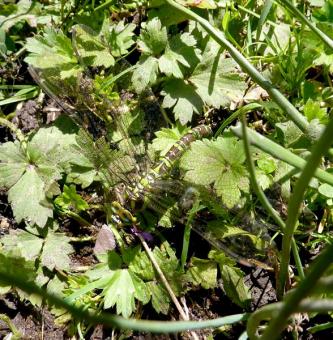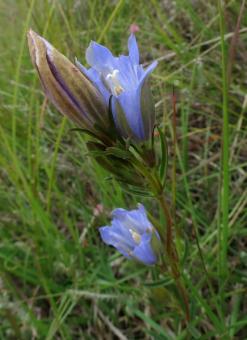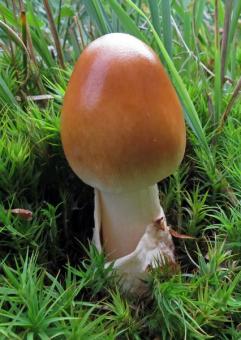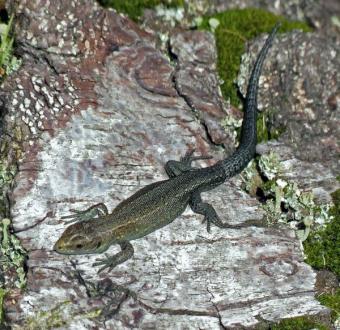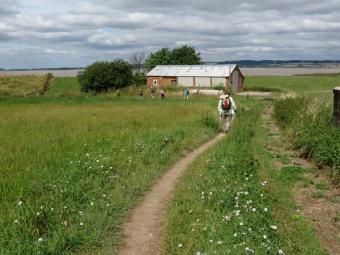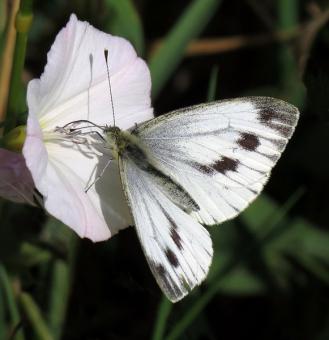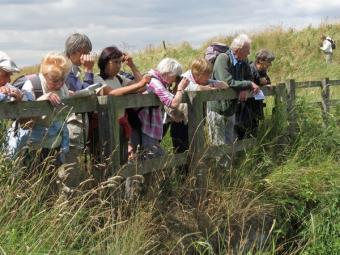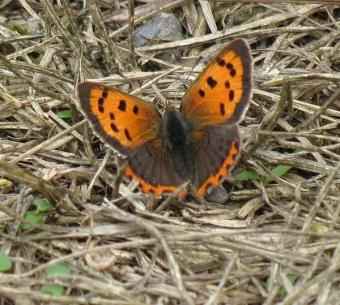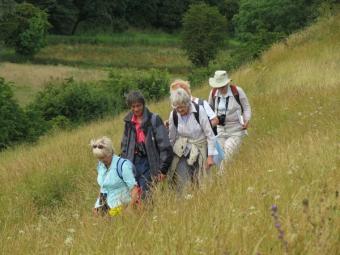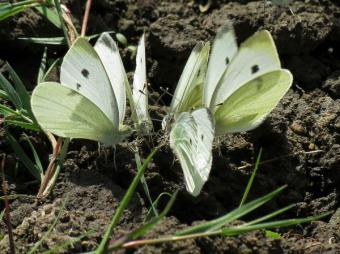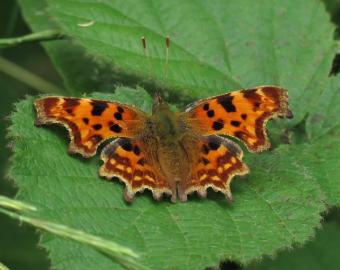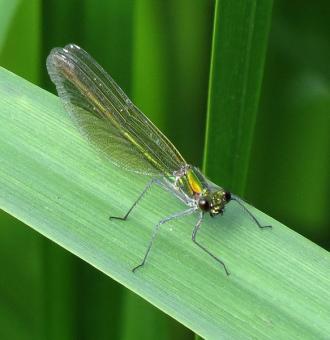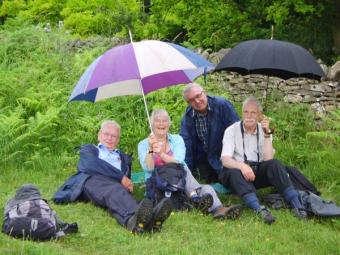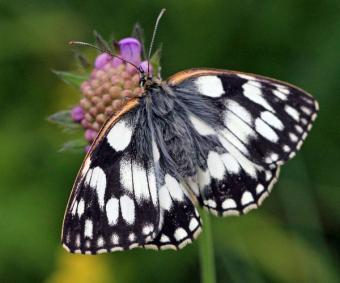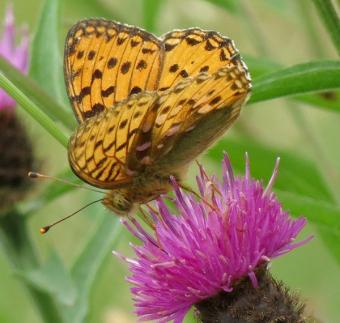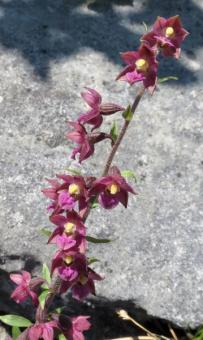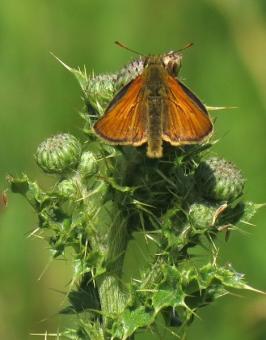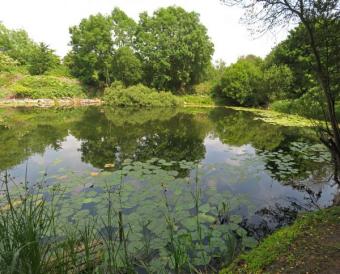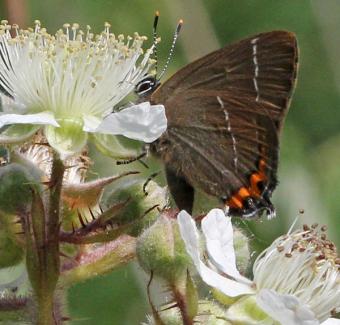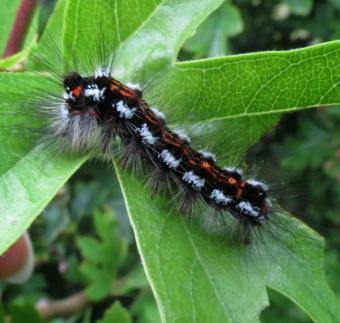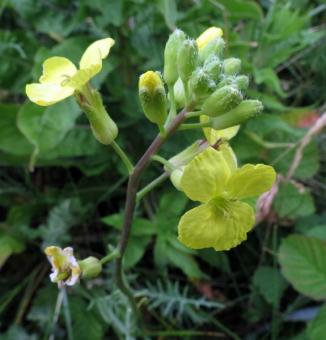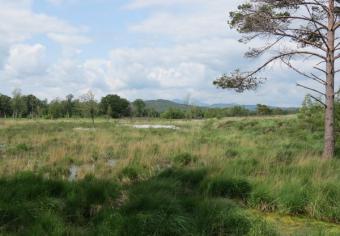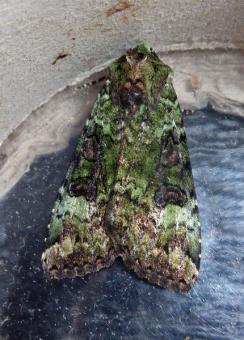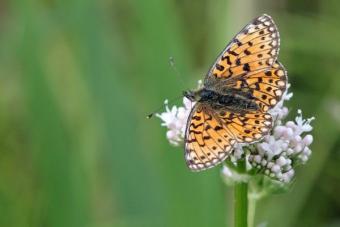WFV, Kiplin Hall North Yorkshire, 18th September 2013
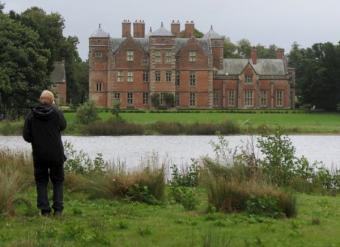 Kiplin HallThere were several aspects to this autumn visit to Kiplin Hall - an historical house with treasures and war time connections: a delightful walled garden with woodland and parkland beyond: a large Lake: plants and trees bearing seeds, berries and fruit as well as late flowers: some fungal delights: a story telling session and finally a birthday celebration!
We arrived at our destination earlier than anticipated and decided to do a one mile walk (some would refer to it as a stroll ) around the large Lake, a former site of gravel extraction. The sky was overcast, the rain kept at bay but oh it was decidedly chilly. Good views of the Hall and Folly were had from the Lake. Greylag and Canada Geese were seen on the Lake as well as Tufted Duck and Great Crested Grebe.
Kiplin HallThere were several aspects to this autumn visit to Kiplin Hall - an historical house with treasures and war time connections: a delightful walled garden with woodland and parkland beyond: a large Lake: plants and trees bearing seeds, berries and fruit as well as late flowers: some fungal delights: a story telling session and finally a birthday celebration!
We arrived at our destination earlier than anticipated and decided to do a one mile walk (some would refer to it as a stroll ) around the large Lake, a former site of gravel extraction. The sky was overcast, the rain kept at bay but oh it was decidedly chilly. Good views of the Hall and Folly were had from the Lake. Greylag and Canada Geese were seen on the Lake as well as Tufted Duck and Great Crested Grebe. 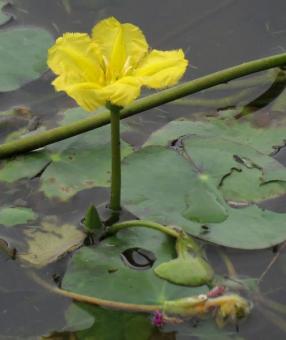 Fringed Water LilyAn interesting variety of shrubs and water loving plants were seen mainly in seed. The Loosestrife which would have looked very attractive earlier in the month had now gone over. However the Water lilies White and Fringed were in flower. Other noteworthy flowers and shrubs were Dovesfoot Cranesbill, Centaury, Red Bartsia as well as Dog Wood with its white flowers and berries. Three Waxcap specimens were found in a grassy area.
At lunch time the group divided into "the softies" who went in search of sustenance in the cafe. They were successful! The "story telling group" enjoyed listening to Joan's tale of "Jack and the Beanstalk" while sitting on low benches in the children's play area. We toured the Walled Garden before assembling for an exploration of the Hall with its history, Maryland connection, paintings and porcelain.
Fringed Water LilyAn interesting variety of shrubs and water loving plants were seen mainly in seed. The Loosestrife which would have looked very attractive earlier in the month had now gone over. However the Water lilies White and Fringed were in flower. Other noteworthy flowers and shrubs were Dovesfoot Cranesbill, Centaury, Red Bartsia as well as Dog Wood with its white flowers and berries. Three Waxcap specimens were found in a grassy area.
At lunch time the group divided into "the softies" who went in search of sustenance in the cafe. They were successful! The "story telling group" enjoyed listening to Joan's tale of "Jack and the Beanstalk" while sitting on low benches in the children's play area. We toured the Walled Garden before assembling for an exploration of the Hall with its history, Maryland connection, paintings and porcelain. 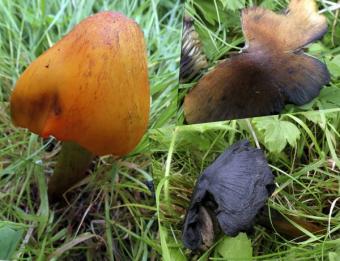 Blackening Waxcap Stages
Blackening Waxcap Stages
We had anticipated meeting Andrew and Lorna however they were nowhere to be seen. In the late afternoon the party, some of whom had explored the gardens and grounds, gravitated to the excellent tea room. The minbus left around 4pm. En route some mini Welsh cakes were distributed in celebration of Margaret's birthday . As if people hadn't eaten enough during the day! We arrived back around 5 30pm having enjoyed good driving conditions. It had been a varied, relaxing and good day out. Thanks to Brian, Sue and Margaret.
Margaret

